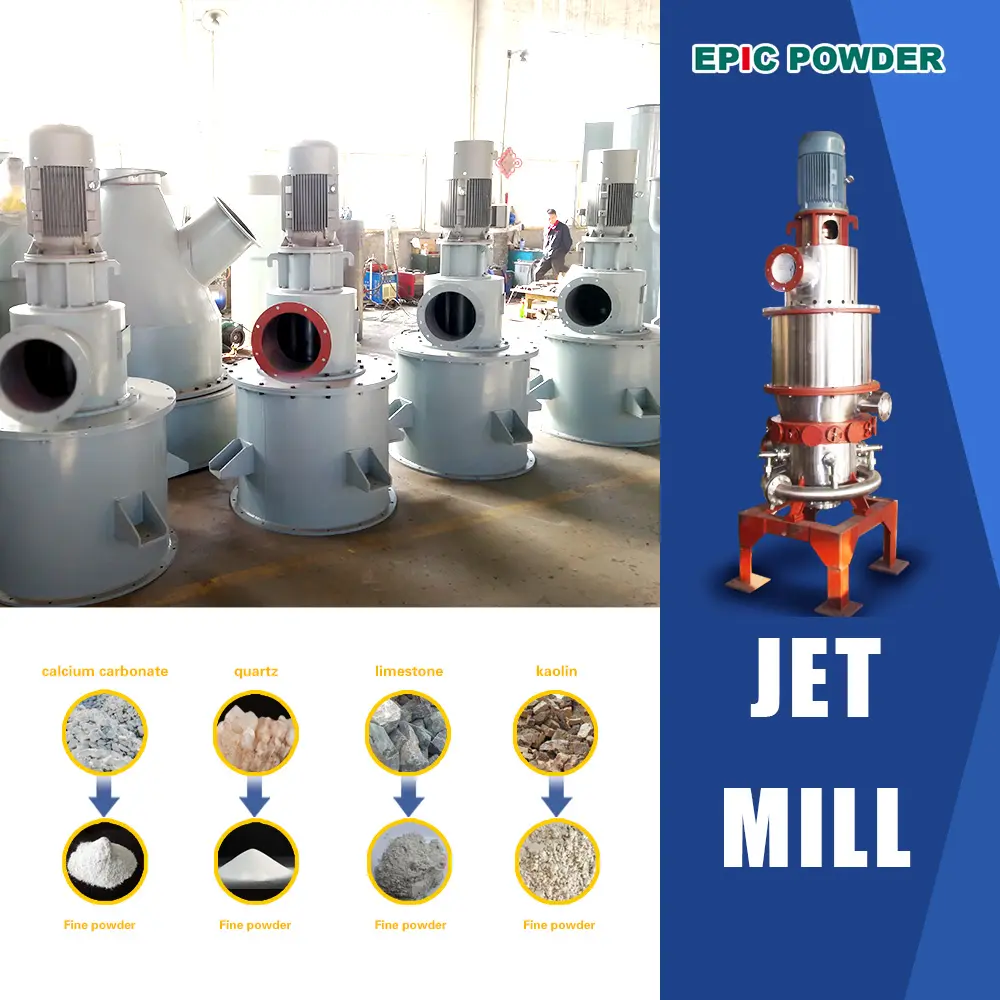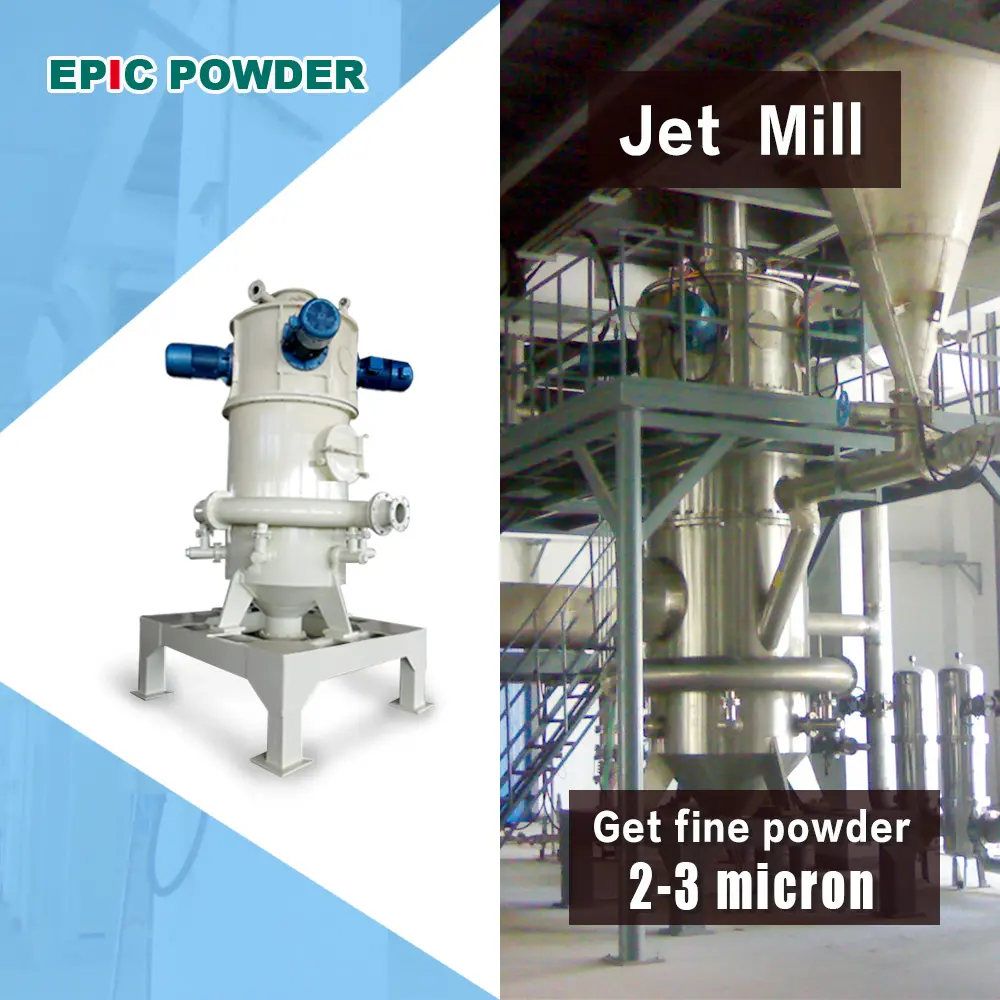ความสะดวกในการทำความสะอาด เจ็ทมิลล์ ขึ้นอยู่กับปัจจัยหลายประการ ได้แก่ การออกแบบโครงสร้าง ส่วนประกอบของวัสดุ สภาวะการทำงาน และแนวทางการบำรุงรักษา โดยทั่วไปแล้ว เครื่องจักรที่ออกแบบมาอย่างดีซึ่งผลิตจากวัสดุคุณภาพสูงและได้รับการดูแลรักษาอย่างเหมาะสมนั้นทำความสะอาดได้ค่อนข้างง่าย ในขณะที่ระบบที่ซับซ้อนหรืออุปกรณ์ที่ถูกละเลยอาจก่อให้เกิดความท้าทาย ต่อไปนี้คือการวิเคราะห์โดยละเอียดเกี่ยวกับข้อควรพิจารณาหลักๆ:

ปัจจัยที่มีผลต่อความยากในการทำความสะอาด
โครงสร้างอุปกรณ์
เครื่องบดแบบเจ็ทที่มีการออกแบบที่เรียบง่าย กะทัดรัด และเป็นแบบโมดูลาร์นั้นทำความสะอาดง่ายกว่า ยกตัวอย่างเช่น รุ่นที่มีข้อต่อแบบปลดเร็ว ช่วยให้ถอดประกอบและทำความสะอาดชิ้นส่วนแต่ละชิ้นได้อย่างหมดจด ในทางกลับกัน โครงสร้างภายในที่ซับซ้อนหรือชิ้นส่วนที่เข้าถึงยากอาจทำให้ระยะเวลาในการทำความสะอาดยาวนานขึ้นและเพิ่มต้นทุนแรงงาน
องค์ประกอบของวัสดุ
วัสดุที่ทนต่อการกัดกร่อนและไม่ติดกระทะ (เช่น สแตนเลส เซรามิก) ช่วยให้การทำความสะอาดง่ายขึ้นโดยลดการยึดเกาะของวัสดุและป้องกันการสึกหรอ ในทางกลับกัน วัสดุที่มีแนวโน้มเกิดไฟฟ้าสถิตหรืออนุภาคตกค้างอาจทำให้การบำรุงรักษายุ่งยาก
เงื่อนไขการปฏิบัติงาน
การประมวลผลวัสดุเหนียวหรือวัสดุที่เกาะตัวกันเป็นก้อนมักต้องการการทำความสะอาดที่บ่อยและเข้มข้นกว่า โดยทั่วไปแล้ว ห้องปฏิบัติการขนาดเล็กจะใช้ความพยายามน้อยกว่าระบบในระดับอุตสาหกรรมที่จัดการวัสดุปริมาณมาก
แนวทางปฏิบัติในการบำรุงรักษา
การทำความสะอาดอย่างสม่ำเสมอช่วยป้องกันการสะสมของคราบสกปรก ช่วยให้มั่นใจได้ถึงประสิทธิภาพและอายุการใช้งานที่ยาวนาน เครื่องมือที่เหมาะสม (เช่น ผงซักฟอกเฉพาะทาง แปรง เครื่องฉีดน้ำแรงดันสูง) และวิธีการต่างๆ ช่วยเพิ่มประสิทธิภาพได้อย่างมาก

แนวทางการทำความสะอาด
ปิดเครื่องและถอดประกอบ
ควรตัดพลังงานออกจากอุปกรณ์และนำวัสดุที่เหลือออกเสมอ ก่อนที่จะถอดประกอบชิ้นส่วนที่ถอดออกได้ (เช่น เครื่องจำแนก ถุงกรอง)
การทำความสะอาดหลังการผ่าตัด
หลังการใช้งานทุกครั้ง ควรกำจัดฝุ่นที่สะสมออกให้หมดโดยใช้เครื่องมือเฉพาะทางหรือระบบอัดอากาศ เศษฝุ่นที่ตกค้างไม่เพียงแต่ลดประสิทธิภาพในการเจียร แต่ยังอาจเร่งการสึกหรอของชิ้นส่วนและทำให้คุณภาพของผลิตภัณฑ์ลดลงอีกด้วย
การบำรุงรักษาหัวฉีดและตัวกรอง
เนื่องจากเป็นส่วนประกอบสำคัญ หัวฉีดจึงส่งผลโดยตรงต่อการกระจายลมและประสิทธิภาพการบด ควรตรวจสอบและเปลี่ยนหัวฉีดที่ชำรุดเป็นประจำเพื่อรักษาประสิทธิภาพการทำงานให้เหมาะสม เช่นเดียวกัน ควรตรวจสอบตัวกรองเพื่อให้แน่ใจว่าตัวกรองป้องกันสิ่งปนเปื้อนเข้าสู่ระบบได้อย่างมีประสิทธิภาพ
การควบคุมสิ่งแวดล้อม
รักษาอุณหภูมิและความชื้นให้เหมาะสมในพื้นที่ทำงาน ความร้อนสูงเกินไปอาจทำให้มอเตอร์มีอายุการใช้งานสั้นลง ในขณะที่อุณหภูมิต่ำอาจทำให้อนุภาคเกาะตัวกัน ความชื้นสูงส่งเสริมการจับตัวเป็นก้อนของวัสดุ ส่งผลให้ประสิทธิภาพในการบดลดลง
การเลือกสารทำความสะอาด
ใช้ผงซักฟอกหรือตัวทำละลายที่มีค่า pH เป็นกลาง (เช่น เอทานอล) ที่เข้ากันได้กับวัสดุที่ผ่านกระบวนการ หลีกเลี่ยงสารเคมีกัดกร่อนที่อาจทำให้ส่วนประกอบเสียหาย
กระบวนการทำความสะอาด
แช่และขัดชิ้นส่วนที่ถอดประกอบแล้ว จากนั้นล้างออกด้วยน้ำหรือลมอัด สำหรับชิ้นส่วนที่ยึดติดแน่น แนะนำให้ใช้เครื่องฉีดน้ำแรงดันสูง ตรวจสอบให้แน่ใจว่าแห้งสนิทก่อนประกอบกลับเข้าที่
การบำรุงรักษาตามปกติ
ดำเนินการทำความสะอาดตามกำหนดเวลา (เช่น ทุกไตรมาส) และตรวจสอบซีล ลูกปืน และน้ำมันหล่อลื่น เพื่อป้องกันปัญหาการทำงาน
ผงมหากาพย์
เครื่องจักรของ Epic Powderรุ่นสเตนเลสที่ทนต่อการกัดกร่อนช่วยให้มีอายุการใช้งานยาวนานพร้อมทั้งยังคงมาตรฐานด้านสุขอนามัย ซึ่งเหมาะอย่างยิ่งสำหรับการใช้งานด้านยา สารเคมี และเกรดอาหาร
สำหรับข้อมูลเพิ่มเติม ข้อมูล ของการทำความสะอาดเจ็ทมิลล์ ติดต่อเรา วันนี้เพื่อรับโซลูชั่นเพิ่มเติม!